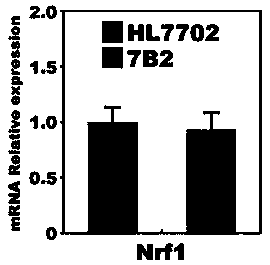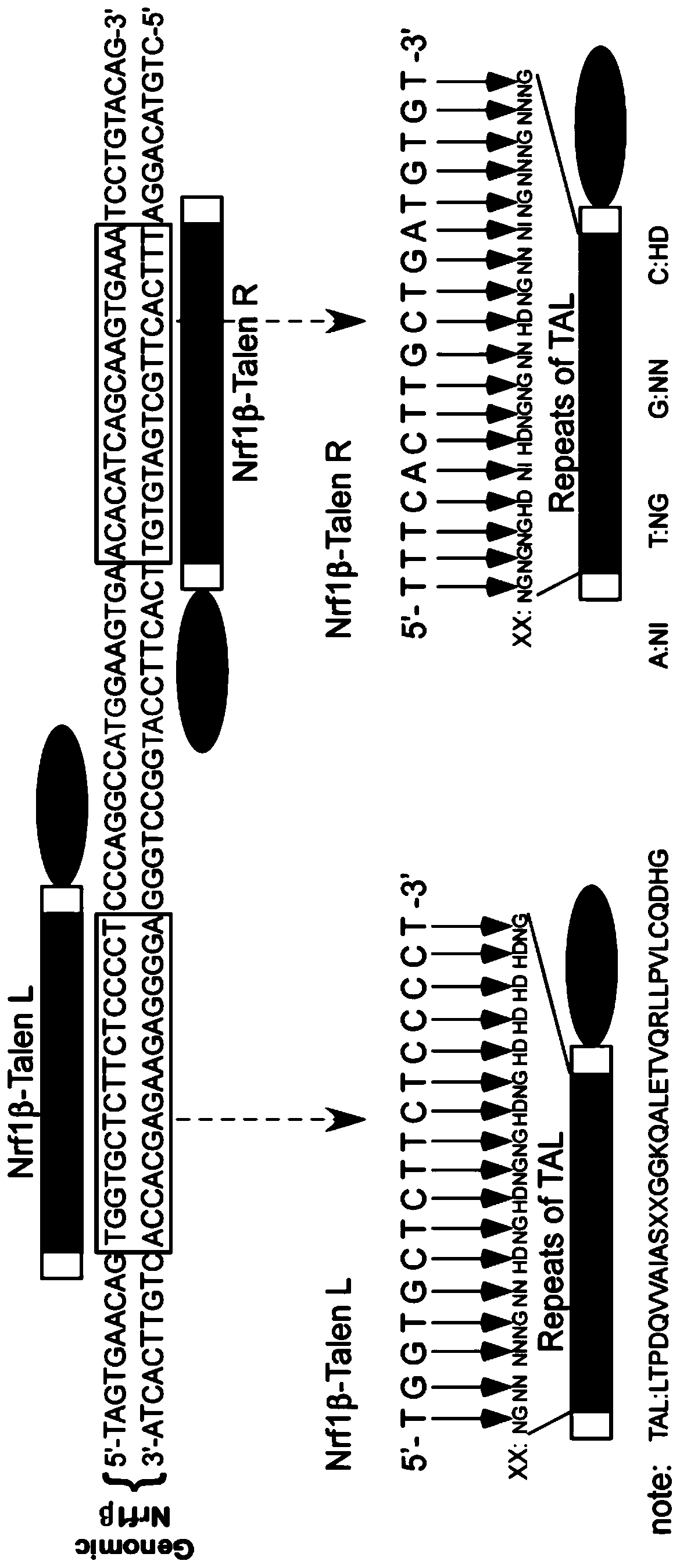Nrf1β gene directional knockout recognition sequence pair, talens, vector pair and application in human hepatocytes
A hepatocyte and beta gene technology, applied in vectors, nucleic acid vectors, genetic engineering, etc., can solve the problems of off-target siRNA technology, poor stability and repeatability of siRNA technology, and cumbersome operation, and achieve simple, easy, high-quality gene editing. The effect of gene editing, the effect of simple and easy research
- Summary
- Abstract
- Description
- Claims
- Application Information
AI Technical Summary
Problems solved by technology
Method used
Image
Examples
Embodiment 1
[0034] Example 1 Selection of editing site and design and construction of Nrf1β-TALEN plasmid
[0035] According to the gene editing principle of TALEN technology, the Nrf1β translation start codon in the CDS region of the Nrf1 genome was selected as the Nrf1β gene TALEN target editing site, and the sequence was: 5'-tagtgaacagtggtgctcttctcccctcccaggcc gaagtgaacacatcagcaagtgaaatcctgtacag-3' (bold font is the Nrf1β protein translation initiation codon). Among them, the left arm of TALEN Nrf1β-Talen L recognizes 17 nucleic acid base sequences as 5'-tggtgctcttctcccct-3' (SEQ ID NO.1); the right arm Nrf1β-Talen R recognizes 18 nucleic acid base sequences as 5'-tttcacttgctgatgtgt- 3' (SEQ ID NO.2); the 18bp sequence between the two recognition and binding sites is 5'-cccaggccatggaagtga-3', which is the cleavage site for the non-specific endonuclease Fok1 dimer. ( figure 1 )
[0036] According to the nucleic acid bases recognized by the left and right arms of the Talen, according...
Embodiment 2
[0042] Screening, cultivation and identification of monoclonal cell lines knocked out of the Nrf1β gene in embodiment 2
[0043] 1) Transfection of HL7702 cells with Nrf1β-TALEN plasmid:
[0044] a. HL7702 cells were planted in 2 wells of a six-well plate, respectively recorded as A (plasmid transfection group) and B well (control group), with 300,000 cells per well, and cultured overnight in DMEM medium. After the cells grow at the bottom of the well plate until about 80% of the bottom plate is covered, prepare to transfect the Nrf1β-TALEN plasmid.
[0045] b. Aspirate the DMEM medium in wells A and B, and add 800 μL Opti-MEM.
[0046] c. Prepare solution 1, solution 2 and solution 3; among them, the formula of solution 1 is as follows: take 1.5 μg of Nrf1β-TALEN L plasmid and 3 μg of Nrf1β-TALEN R plasmid, add 100 μL Opti-MEM, mix well and let stand for 5 minutes;
[0047] Solution 2: 100 μL Opti-MEM;
[0048] Solution 3: Take 18 μL of lipo20000 and add 200 μL Opti-MEM, m...
PUM
 Login to View More
Login to View More Abstract
Description
Claims
Application Information
 Login to View More
Login to View More - R&D
- Intellectual Property
- Life Sciences
- Materials
- Tech Scout
- Unparalleled Data Quality
- Higher Quality Content
- 60% Fewer Hallucinations
Browse by: Latest US Patents, China's latest patents, Technical Efficacy Thesaurus, Application Domain, Technology Topic, Popular Technical Reports.
© 2025 PatSnap. All rights reserved.Legal|Privacy policy|Modern Slavery Act Transparency Statement|Sitemap|About US| Contact US: help@patsnap.com



